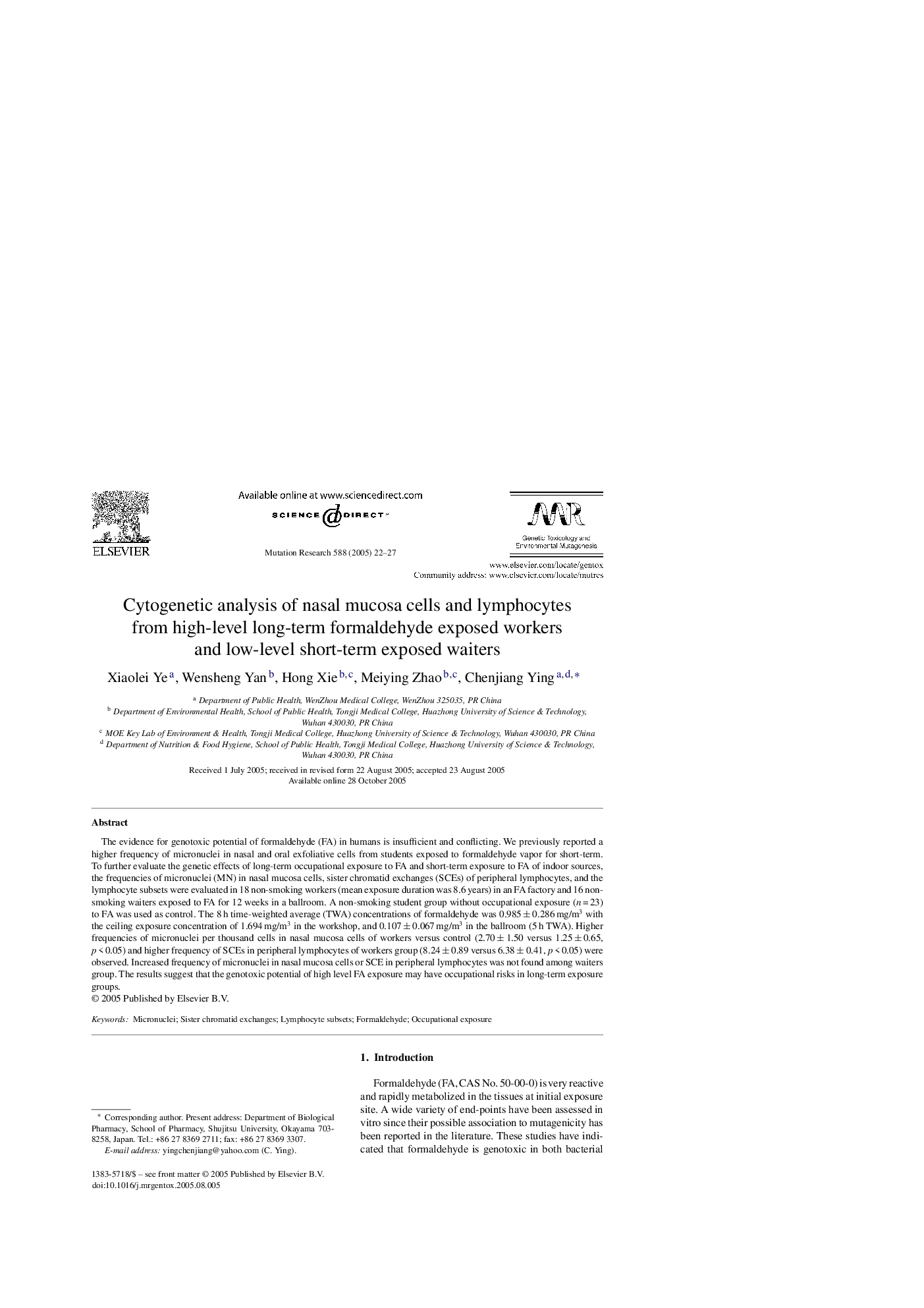| Article ID | Journal | Published Year | Pages | File Type |
|---|---|---|---|---|
| 10915038 | Mutation Research/Genetic Toxicology and Environmental Mutagenesis | 2005 | 6 Pages |
Abstract
The evidence for genotoxic potential of formaldehyde (FA) in humans is insufficient and conflicting. We previously reported a higher frequency of micronuclei in nasal and oral exfoliative cells from students exposed to formaldehyde vapor for short-term. To further evaluate the genetic effects of long-term occupational exposure to FA and short-term exposure to FA of indoor sources, the frequencies of micronuclei (MN) in nasal mucosa cells, sister chromatid exchanges (SCEs) of peripheral lymphocytes, and the lymphocyte subsets were evaluated in 18 non-smoking workers (mean exposure duration was 8.6 years) in an FA factory and 16 non-smoking waiters exposed to FA for 12 weeks in a ballroom. A non-smoking student group without occupational exposure (n = 23) to FA was used as control. The 8 h time-weighted average (TWA) concentrations of formaldehyde was 0.985 ± 0.286 mg/m3 with the ceiling exposure concentration of 1.694 mg/m3 in the workshop, and 0.107 ± 0.067 mg/m3 in the ballroom (5 h TWA). Higher frequencies of micronuclei per thousand cells in nasal mucosa cells of workers versus control (2.70 ± 1.50 versus 1.25 ± 0.65, p < 0.05) and higher frequency of SCEs in peripheral lymphocytes of workers group (8.24 ± 0.89 versus 6.38 ± 0.41, p < 0.05) were observed. Increased frequency of micronuclei in nasal mucosa cells or SCE in peripheral lymphocytes was not found among waiters group. The results suggest that the genotoxic potential of high level FA exposure may have occupational risks in long-term exposure groups.
Related Topics
Life Sciences
Biochemistry, Genetics and Molecular Biology
Cancer Research
Authors
Xiaolei Ye, Wensheng Yan, Hong Xie, Meiying Zhao, Chenjiang Ying,
